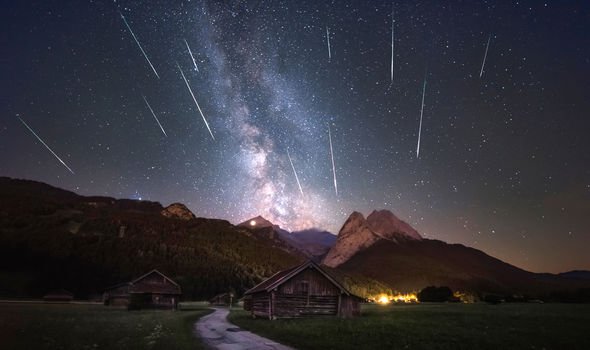The annual Lyrid meteor shower put on an exceptional show for skywatchers this year, as gorgeous “shooting stars” lit up the dark night sky last April 22.
At some places in the globe with clear, dark skies devoid of light pollution, people were graced with as many as 20 visible meteors per hour.
As the meteor shower gave stargazers under coronavirus lockdown a moment of much-needed respite, many are now wondering when the next meteor shower will appear within the year.
So, here is a list of meteor showers to look out for around the globe for the year 2020.
Eta Aquarids on May 6
This meteor shower has a relatively broad maximum, meaning everyone can watch it the day before and after the predicted peak morning of May 6. Yet astronomers say that the gibbous moon is sure to dampen this year’s production meteors. The shower favors the Southern Hemisphere and will appear at 4 a.m at all locations across the globe. For that reason, you’ll want to watch this meteor shower in the hour or two before dawn, no matter where you are on Earth.
Perseids on August 13-14
The Perseid meteor shower is perhaps the most beloved meteor shower of the year for those in the Northern Hemisphere. It’s a rich meteor shower, it’s steady and it will appear in all parts of the sky. These meteors frequently leave persistent trains. Perseid meteors tend to strengthen in number as late night deepens into midnight, and typically produce the most meteor hours before dawn.
Leonids on November 17
The Leonid meteor shower has produced some of the greatest meteor storms in history. On the morning of November 17, 1966, astronomers recorded the rate of the Leonid reaching as high as thousands of meteors per minute during a span of 15 minutes. Leonid meteor storms sometimes recur in cycles of 33 to 34 years, but the Leonids around the turn of the century did not match the abundance of meteors that showered in 1966. This 2020, this meteor shower is expected to produce a maximum of 10-15 meteors per hour on a dark night. Like many meteor showers, the Leonids will be at its peak after midnight and will display the greatest meteor numbers just before dawn, for all points on the globe.
Geminids on December 13-14
The Geminid meteor shower is one of the finest meteor showers in the Northern Hemisphere. The meteors are plentiful, rivaling the August Perseids. They are often bold, white, and bright. On a dark night, you can catch 50 or more meteors per hour. The greatest number of meteors fall hours after midnight, centered around 2 a.m. local time when the radiant point is highest in the sky.
Ursids on December 22
Die-hard meteor watchers in the Northern Hemisphere watch for Ursid meteors about a week after the Geminids. This low-key meteor shower is active each year from about December 17 to 26. The Ursids usually peak around the December solstice, perhaps offering 5 to 10 meteors per hour during the predawn hours in a dark sky. /rcg
